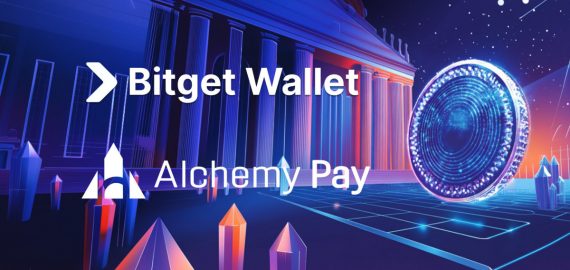Router V2 Unveiled: A Revolutionary Leap in Blockchain Interoperability, Promising Lightning-Fast Transactions and Enhanced Security


In Brief
Ramani Ramachandran, CEO of Router Protocol, discussed Router V1 and V2, modularity, liquidity fragmentation, and Router Chain’s approach to security.
In light of the highly anticipated Hack Seasons Brussels event, we had the opportunity to sit down with Ramani Ramachandran, the visionary CEO of Router Protocol. Ramani provides in-depth insights into the architecture of Router V1 and V2, the concept of modularity, and Router Chain’s approach to liquidity fragmentation and security.
Can you elaborate on your journey to Web3? How did you start, and what was your first project?
Previously, I was in finance, working in private equity and investment banking. After my MBA at MIT Sloan, I worked on Wall Street, then in London, and eventually in Singapore.
In Singapore, I was running an investment bank and advisory firm. We were involved in a lot of secondary market assets and infra projects in Southeast Asia. We also worked with unlisted securities of companies like Uber, Alibaba, and Airbnb.
I had an idea to create a marketplace for these securities. That’s how I started my journey into Web3. We raised a small amount of money and built a Bitcoin marketplace to trade pre-IPO and private securities. The main challenge wasn’t the technology or economics but the regulatory aspect, especially dealing with US and Singapore regulators. However, this venture got me hooked on the Bitcoin space, and I’ve been building and investing in this space since 2016.
What are the key differences between Router V1 and Router V2 (Router Chain) in terms of architecture?
V1 was essentially a bridge conceived around early 2021. At that time, there were a few chains like Polygon, Ethereum, and Avalanche. The idea was to help users transfer assets across these chains. V1 had a bridge called Voyager, which was a proof-of-asset bridge using multi-sig, which was quite advanced for its time. It was fast and optimized, but the conversation around bridge security has since evolved.
V2 is a more comprehensive interoperability-focused L1 chain built on the Tendermint consensus on Cosmos. V2 includes a crypto-economic security layer around the Cosmos blockchain. This is a major upgrade because V1’s bridge security model, while effective, was limited compared to the more sophisticated security measures we see now.
V2 allows for a broader interoperability layer, including token transfer and messaging, and has a bridge called Nitro as one of its applications. Nitro is very fast and cheap, leveraging the cross-chain intent framework we developed, which makes it stand out in terms of speed and cost.
Can you explain how modularity works for the Router and what your vision is for modularity in the future?
Modularity in the Router Chain involves separating the execution layer, consensus layer, and data layer, similar to how the automobile industry evolved. Initially, cars were basic, but now they have diverse engines and standardized controls. In blockchain, this modularity means you can choose each component of your tech stack, such as crypto-economic security (POS, ZK), data storage, and execution layers. This allows for greater flexibility and customization based on specific use cases. For example, you could have a ZK roll-up for execution and a separate data layer like Celestia or Avail.
How does Router Chain propose to tackle liquidity fragmentation? What mechanisms are in place to ensure seamless liquidity across multiple networks?
Liquidity fragmentation is a challenge, for sure. Traditional bridges rely on TVL (Total Value Locked), which has high costs and security risks. Our approach with the CCIF (Cross-Chain Intent Framework) involves solvers who act as market makers. They listen to incoming requests on gateway contracts and fulfill trades immediately, then submit proofs to the blockchain.
This eliminates the need for TVL and reduces security risks as solvers manage their liquidity based on market dynamics. This method ensures that liquidity is not locked in vaults, which can be a security vulnerability.
The whitepaper outlines plans for future work to improve interoperability with private blockchains. Can you discuss these plans and the potential impact they could have on the blockchain ecosystem?
Private blockchains are enterprise blockchain frameworks. While the white paper might reference them, the trend is moving towards recognizing that private blockchains often don’t require the decentralized consensus that public blockchains offer. They might as well use traditional databases for their purposes.
However, Router Chain can support communication between private blockchains, providing a more efficient interoperability solution than others like Axelar. Our modular approach allows private blockchains to leverage Router Chain’s interoperability features without compromising their specific requirements.
Could you describe the multilayer security approach employed by Router Chain and how it ensures the protection of cross-chain transactions?
Router Chain’s security starts with the proof-of-stake (PoS) Tendermint consensus, which is our primary security layer. We are also working on an auxiliary ZK (Zero-Knowledge) layer for applications that require additional security. This modular security approach means that applications can choose their security model based on their specific needs.
Beyond the core PoS security, they might add a ZK-based layer or even an optimistic approach. This flexibility allows for a more tailored security solution for different use cases. Additionally, we are exploring the use of AVS (Automated Validation System) and restaking mechanisms to enhance security further.
Have you faced any challenges or issues while implementing your solutions?
The question of governance is definitely solvable. Right now, if you look at these systems, such as Handshake or Interact, there’s a pool. We stake tokens and encourage community participation. But if you look at the numbers, even for platforms like Uniswap, they are very fragmented and low and focused on just one chain, Ethereum.
With the development of chains, especially across L2s, many holders will have their governance tokens spread across multiple chains, and this is becoming a big problem. Cross-chain governance is a very interesting problem to solve because while we talk about Web3, 90% of people are more interested in yields, meme coins, and other assets rather than participating in governance. This leaves only a small community actively engaged in governance.
Cross-chain governance can address some of these problems by building incentives and ensuring that holders of significant governance tokens in non-Ethereum chains can also contribute. Router Chain makes it very easy to deploy cross-chain governance due to our interoperability layer and the chain abstraction we’ve built. Users can have one interface to participate from any chain, making the voting process effective and unified.
Are you more of a consumer-focused or developer-focused chain?
We are an infrastructure protocol, so we care about developers. However, what gets developed needs to be consumed. We collaborate with developers to build consumer-facing apps to make it easy for them. Whether B2C or B2B2C, we aim to solve real problems for end-users.
Huge events are coming. So, what are your plans for the Hack Seasons Brussels?
We are most excited about our restaking panel with partners like EigenLayer and Lido. We are also looking forward to interacting with other amazing projects during Hack Seasons Brussels, which will be a large-scale event. Additionally, we are excited about collaborating with MPost to create a long-term partnership for future events.
Disclaimer
In line with the Trust Project guidelines, please note that the information provided on this page is not intended to be and should not be interpreted as legal, tax, investment, financial, or any other form of advice. It is important to only invest what you can afford to lose and to seek independent financial advice if you have any doubts. For further information, we suggest referring to the terms and conditions as well as the help and support pages provided by the issuer or advertiser. MetaversePost is committed to accurate, unbiased reporting, but market conditions are subject to change without notice.
About The Author
Victoria is a writer on a variety of technology topics including Web3.0, AI and cryptocurrencies. Her extensive experience allows her to write insightful articles for the wider audience.
More articles

Victoria is a writer on a variety of technology topics including Web3.0, AI and cryptocurrencies. Her extensive experience allows her to write insightful articles for the wider audience.

















































